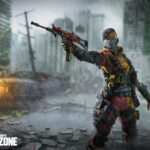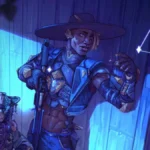In the vibrant world of video game development, creating compelling and immersive artwork is not just a task; it’s a journey through creativity and technical prowess. As aspiring creators embark on this journey, many turn to Game Development Courses to master the craft.
These courses often cover the full spectrum of Game Development Stages, from conceptualisation to final polish, offering a structured path to bringing visions to life. This blog delves into the essential steps and best practices for creating game artwork, drawing from the rich tapestry of knowledge shared in these courses
Understanding the Game Development Stages
Before diving into the intricacies of game art creation, it’s crucial to understand the game development stages. These stages provide a roadmap for the project, ensuring that the artwork dazzles visually and aligns seamlessly with the gameplay, narrative, and technical requirements. The stages typically include:
Pre-production
This is the brainstorming phase, where ideas are born and conceptualised. Artists work closely with the design team to create concept art that captures the game’s essence.
Production
The bulk of the artwork is created during this stage, including characters, environments, assets, and UI elements. It’s a collaborative effort that involves constant iteration and refinement.
Post-production
In this final stage, artists add the finishing touches, such as polishing graphics and optimising assets for different platforms. It’s also when the artwork undergoes rigorous testing to ensure it integrates flawlessly with the game mechanics.
Step 1: Conceptualisation and Research
The first step in creating game artwork is conceptualisation. This involves researching and gathering inspiration to develop a unique visual style that supports the game’s theme and story. Artists should explore various sources, such as art history, films, and nature, to fuel their creativity. Concept art, including sketches and mood boards, is vital in solidifying the game’s visual direction.
Best Practice: Collaborate and Communicate
Effective collaboration and communication with the development team are paramount. Artists should regularly share their concepts and progress, seeking feedback to ensure the artwork aligns with the game’s vision and technical constraints. This collaborative approach fosters a cohesive and unified game world.
Step 2: Designing Characters and Environments
Character and environment design are at the heart of game artwork. Characters should be designed with their roles and personalities in mind, making them relatable and memorable to players. Conversely, environments set the stage for the game’s action, influencing its mood and pacing.
Best Practice: Focus on Consistency and Detail
Maintaining consistency in the visual style across all game elements is crucial for immersion. Artists should pay meticulous attention to detail, ensuring that every texture, shadow, and light enhances the game’s atmosphere and storytelling.
Step 3: Creating Assets and UI Elements
Assets are the building blocks of the game world, including objects, weapons, and interactive elements. The user interface (UI) encompasses the menus, icons, and HUD elements that players interact with. Both require a keen eye for design and functionality.
Best Practice: Optimise for Performance
While striving for visual excellence, artists must also optimise their artwork to meet performance criteria. This means creating assets that look great but are also efficient in terms of memory and processing power, ensuring a smooth gaming experience across different devices.
Step 4: Animation and Visual Effects
Animation brings the game to life, adding motion to characters and environments. Visual effects (VFX) enhance this further, adding realism and flair with elements like explosions, weather, and magical effects.
Best Practice: Integrate with Game Mechanics
Animations and VFX should look spectacular and integrate seamlessly with the game mechanics. This requires close collaboration with programmers and designers to ensure that visual elements complement the gameplay, enhancing the overall experience without disrupting it.
Step 5: Testing and Iteration
Testing is a critical step in the game development process. Artwork needs to be tested in the game engine to identify any visual, performance, or integration issues. Based on feedback, artists will iterate their work, adjusting to perfect the game’s visual experience.
Best Practice: Embrace Feedback
Openness to feedback is essential for growth and improvement. Artists should view testing and iteration as opportunities to refine their work, embracing constructive criticism from team members and playtesters alike.
Conclusion
Creating game artwork is a complex, multidisciplinary endeavour that demands creativity, technical skill, and a deep understanding of the game development stages. By following these essential steps and best practices, artists can craft visually stunning and cohesive game worlds that captivate players and stand the test of time.
As the gaming industry evolves, those pursuing game development courses will find themselves at the forefront of innovation, ready to push the boundaries of what’s possible in game art creation. For more information, check this page out: The Knowledge Academy




